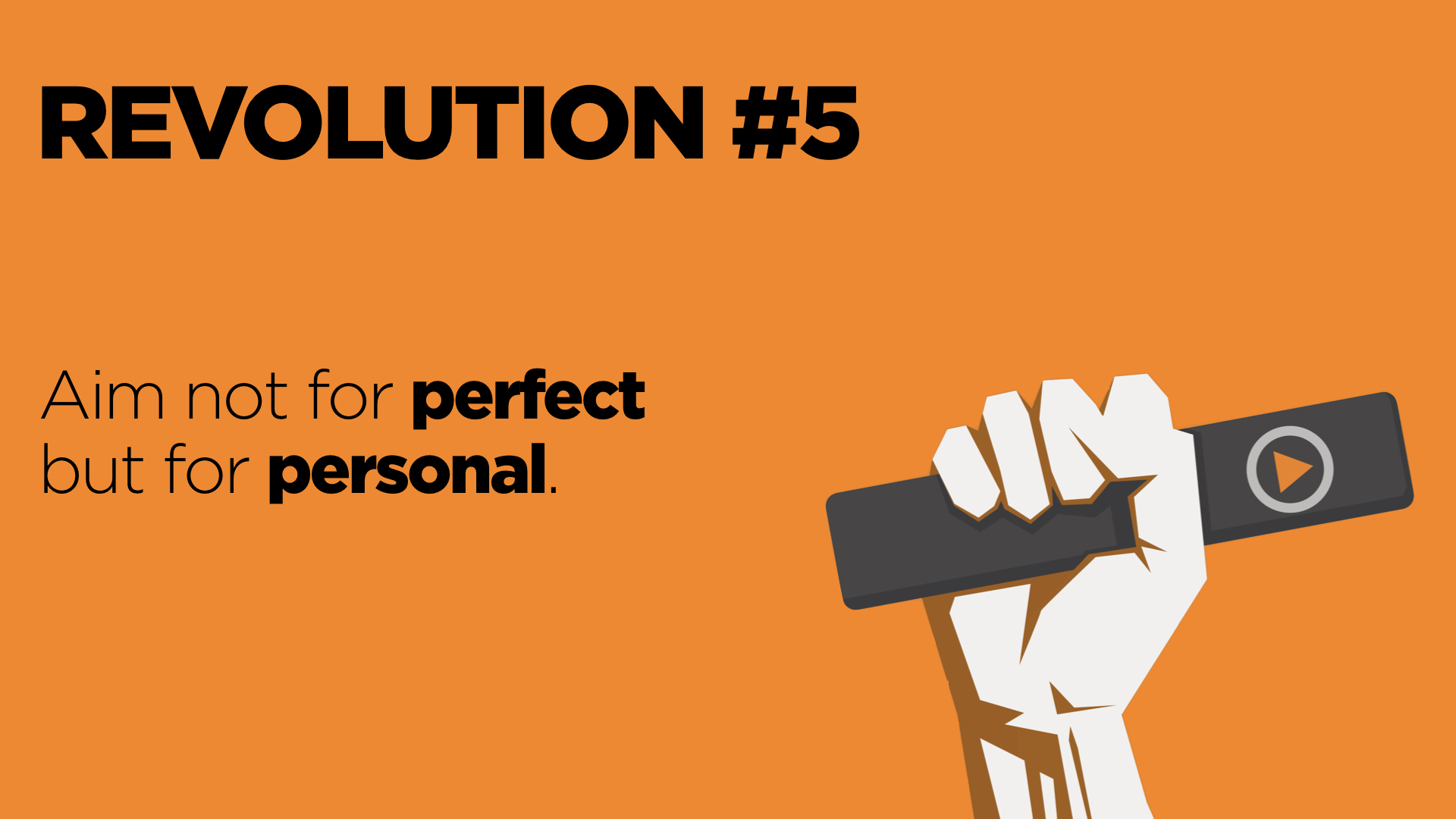What’s the right tone for Business Presentations?

TED has provided us all with a welcome relief from Death by PowerPoint. Shorter, more personal, more visual and more memorable, we now have thousands of talks to choose from providing us with a learning platform as awesome as Wikipedia. Business has benefited from it in miraculous ways. Garr Reynolds, author of Presentation Zen, once coined a great phrase: the ‘Ted-ification of business presentations’. Thanks in part to TED, but also to a certain extent to the original presentations of Steve Jobs, we all benefit from simpler, clearer, more original, more relevant and dare I say it more entertaining business presentations. However, with familiarity comes contempt and the new normal brings challenges. There are two key points we need to remember when presenting in business: boundaries and context.
Continue ReadingAim not for perfect, but for personal.

There is no such thing as a perfect presentation. You should of course prepare and rehearse it enough so you know it well, and so your messages come from the heart, not the head. If you can focus on delivering not just the syllables of your words, but the meaning behind them, then you are ready to present. Do not overdo the rehearsals, though. Your audience does not expect absolute perfection, and if you can create a strong connection with them, they will accept your imperfections, and see you as more human. Focus not on trying to speak perfectly, but on making a personal connection with your audience, one member at a time.
Continue ReadingDo I really need slides?

The success of PowerPoint in taking over corporate communication has led to one major problem: it is now the default way people present. If your boss asks you: “Have you prepared your presentation?” what she really means is: “Have you prepared your PowerPoint® slides?” This means that presenters automatically assume that they will use PowerPoint® slides, and do not even consider that there may be other possibilities. Ask yourself, for each point in your presentation: does my audience really need any visual aids? Don’t assume they do. I’ve worked on TEDx talks where a speaker has produced some very good slides, but when I’ve ended up convincing him that his audience doesn’t need them, and would do better without them. In my own TEDx talk, there are parts where I now think I’d have done better not to have slides on the screen. In most sales presentations, slides are just a barrier: it’s better to have a conversation.
Continue ReadingSharknado is the same movie as Titanic, only with more sharks

Believe it or not, all American movies rely on the same formula; that formula is so sacred that scripts will get rejected if they stray from it. Whether it’s a psychological drama like American Beauty, a sci-fi movie like Star Wars or an action movie like Mission: Impossible, the same structure, plot points and character development techniques are used. I’ll just take one as an example: the hero, the main protagonist, is always an orphan, literally or figuratively, or experienced a personal drama; it is supposed to give the character more likeness. Luke Skywalker is an orphan. Jack Dawson, the hero from Titanic, leaves everything behind as a third-class passenger. Fin, the hero from Sharknado, is divorced.
Continue ReadingDoctor Visual & Mister Slide

Slides can be an extremely powerful way of making your messages clearer and more memorable – yet all too often they are an obstacle to communication. Humans can’t listen and read different things simultaneously: we can only process one linguistic input at a time. So if a slide features a lot of text and detail, it might make a useful reference document, but a terrible visual aid. On the other hand, if you keep your slides simple, with only a few words, they’ll be good visual aids but worthless as handouts.
Continue ReadingWhat are the few big things we need to change to fix presentations?

In 2021 we can watch more examples than ever to know how to give a good presentation. We see examples of it in TED, top company Keynotes and our favorite lecturers and leaders. Yet still there are things that need to be changed. I have tried to collect them into what I call the 5 negatives followed by our very own revolution solutions! No foundations, people are still too last minute, whether its completing that 20,000-word dissertation at university written the night before or the finance report mixed together from excels and spreadsheets in the metro the same morning. I have seen plenty of TED talks where the speakers arrive to the event with an overlong and convoluted talk. Lack of decent planning leads to difficult situations and loss of credibility. It can also heighten anxiety. Not entirely surewhat this is all about? Neither will your audience be. Not putting them first will not yield the results you want, and if the objective isn’t clear in the first place then it’ll be doubly hard. Always take the time to know your audience needs and context.
Continue ReadingPrepare your story before your slides

As our recent LinkedIn poll showed clearly, the number one thing people hate about presentations is when the speaker reads slides to the audience. Why does anyone still do this? If you show them all the text, they can read it far more quickly than you can say it, and they will wonder why you didn’t just give them a document to read instead. If you are going to read your bullet-points, and then comment on them, be aware that while you are talking about point 1, they have finished reading all 6 points on your slide, and are switching off until you catch up with them.
Continue ReadingDon’t inform: Transform!

What is your presentation’s primary objective? Many presenters treat their talk as if it were a dental appointment: their sole aim is to get through it as quickly and painlessly as possible, escape mostly unharmed, then drink something cool or strong, or perhaps both. Other presenters might say their aim is to share information: for example, to explain sales targets, or business results. It’s important to dig a little deeper, and when it comes to objectives, the most useful word is ‘why’. Why are you explaining your sales targets? Is there perhaps something you want your audience to do differently? Perhaps just by knowing the targets they will behave differently, or feel more motivated to achieve them. In which case, you’ve changed them – and maybe that change was your real objective.
Continue Reading